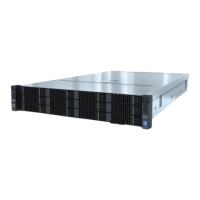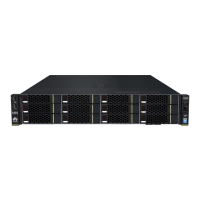Memory Patrol Configuration
The memory engine corrects correctable errors upon detection. If these errors are not
corrected promptly, uncorrectable errors may occur.
6.2.3.6 DIMM Installation Rules
l General DIMM Installation Rules
– CPU sockets connected to the installed DIMMs cannot be empty.
– Do not mix LRDIMMs and RDIMMs in the same compute node.
– 2.7.2 DIMM Slots lists the DIMM installation sequence.
– When installing DIMMs in a memory channel, install DIMMs of more ranks and
then DIMMs of fewer ranks (starting from the slot farthest from the CPU in the
channel). For example, install quad-rank DIMMs, then dual-rank DIMMs, and then
sing-rank DIMMs.
l DIMM Installation Rules for Specific Modes
– Installation Rules for the Memory Sparing Mode
n Follow the general DIMM installation rules.
n The spare configuration of each channel must be valid.
n Different channels can have different spare configurations.
n Each channel with DIMMs installed must have a spare rank.
– Installation Rules for the Memory Mirroring Mode
n Follow the general DIMM installation rules.
n Install DIMMs in either channels 1 and 2, or channels 3 and 4. The installed
DIMMs must be of the same size and organization.
n For a multi-CPU configuration, each CPU must have a valid memory
mirroring configuration.
– Installation Rules for the Memory Patrol Mode
See the general DIMM installation rules.
6.2.3.7 DIMM
Installing a DIMM
Step 1 Power off the G560. For details, see 3.1 Powering Off the Compute Node.
Step 2 Remove the G560. For details, see 3.3 Removing the G560.
Step 3 Place the G560 on the ESD floor.
Step 4 Remove the cover. For details, see 3.7 Cover.
Step 5 Take a spare DIMM out of its ESD bag.
Step 6 Open the two fixing clips of the DIMM slot. See (1) in Figure 6-4.
FusionServer G5500 Server
User Guide
6 Optional Part Installation
Issue 02 (2017-12-15) Huawei Proprietary and Confidential
Copyright © Huawei Technologies Co., Ltd.
129

